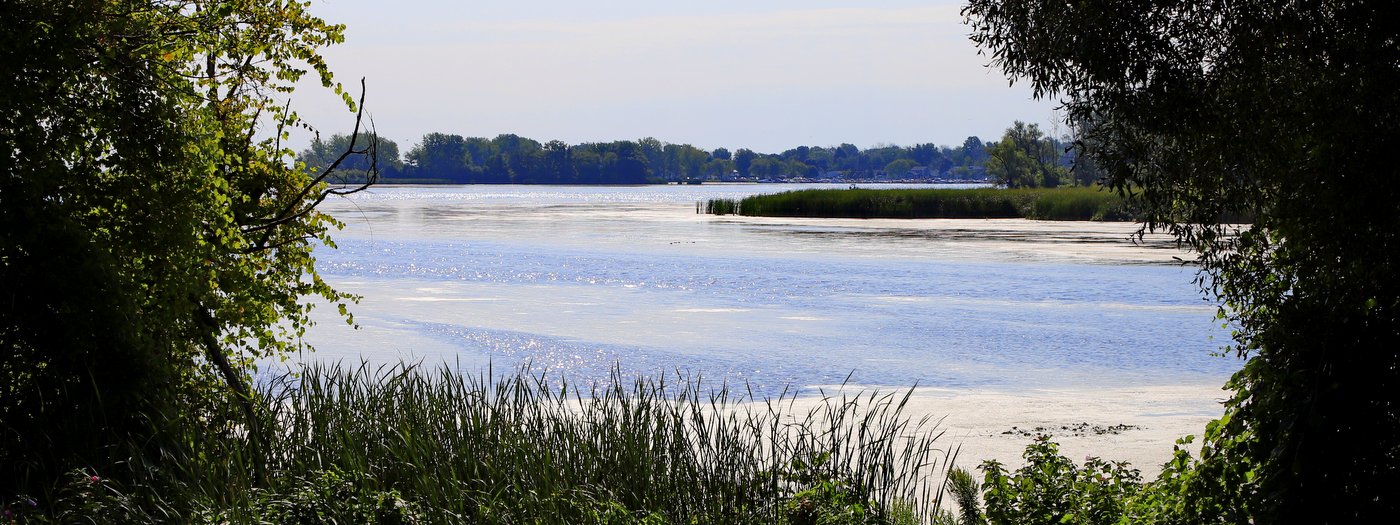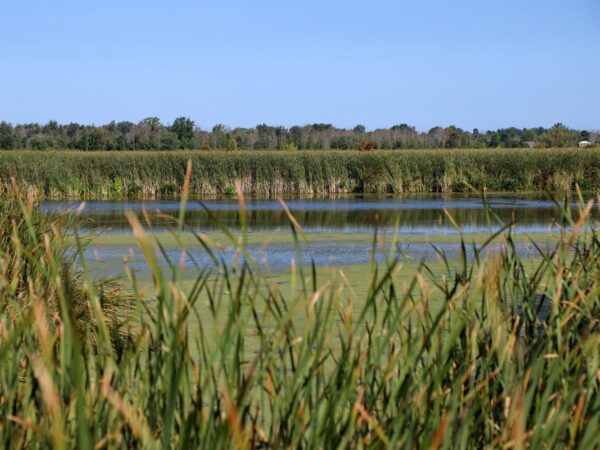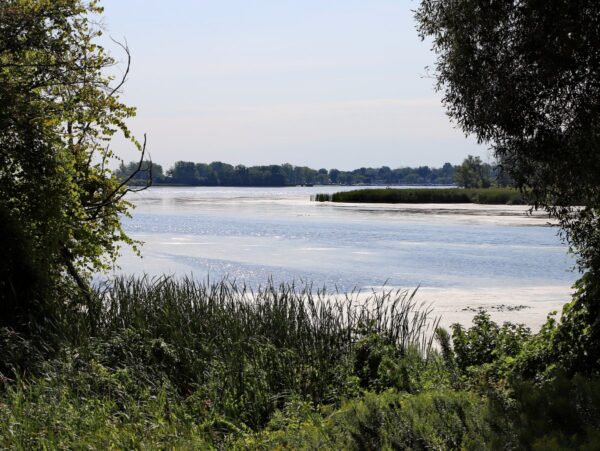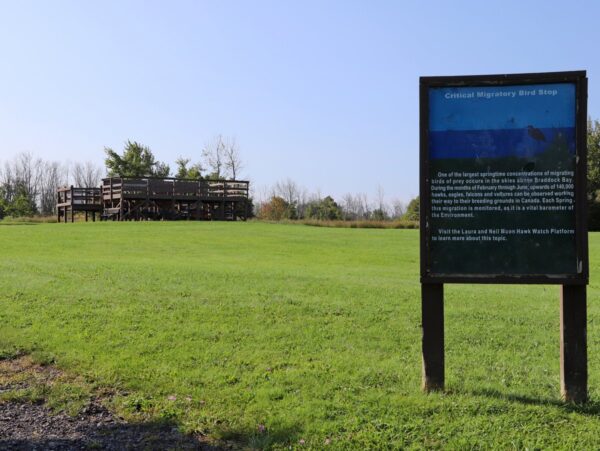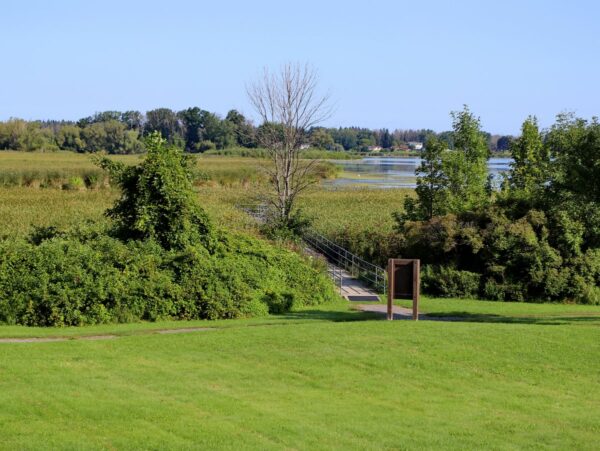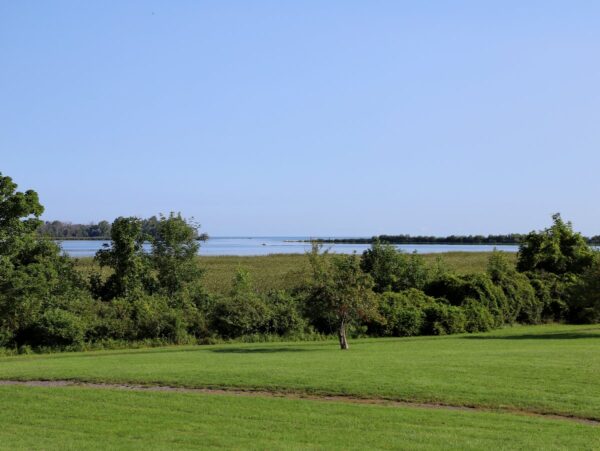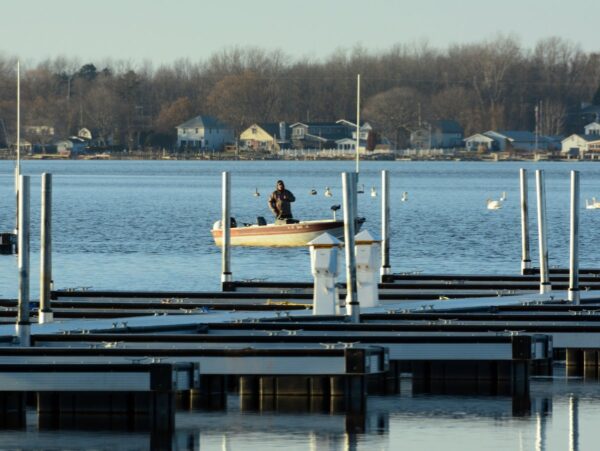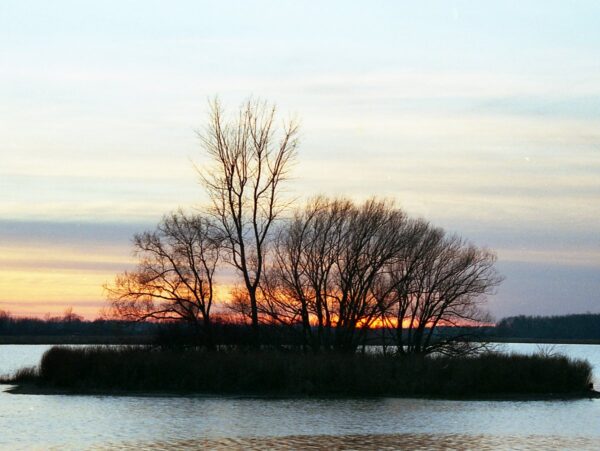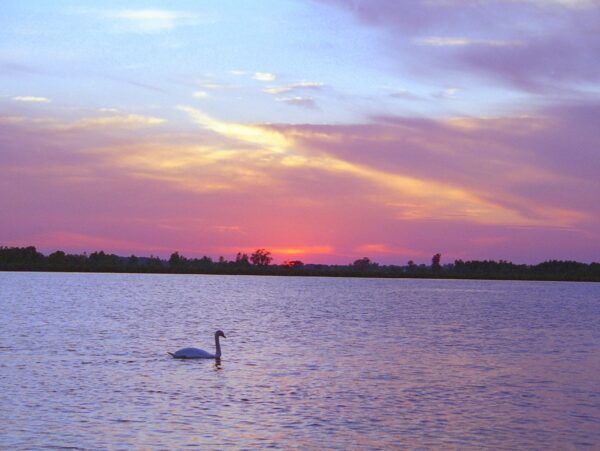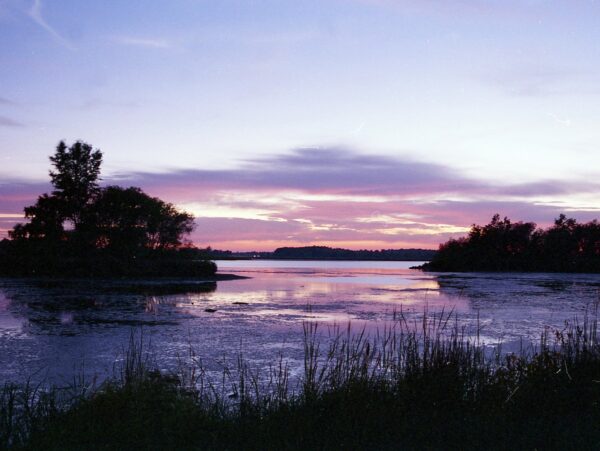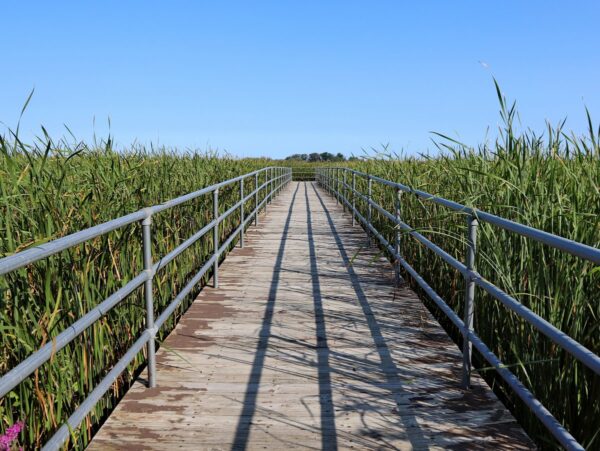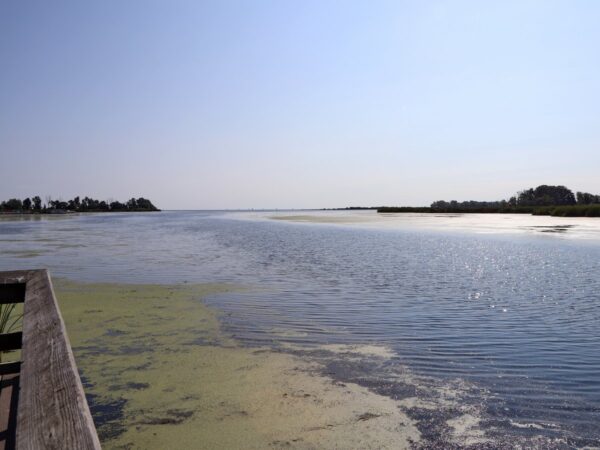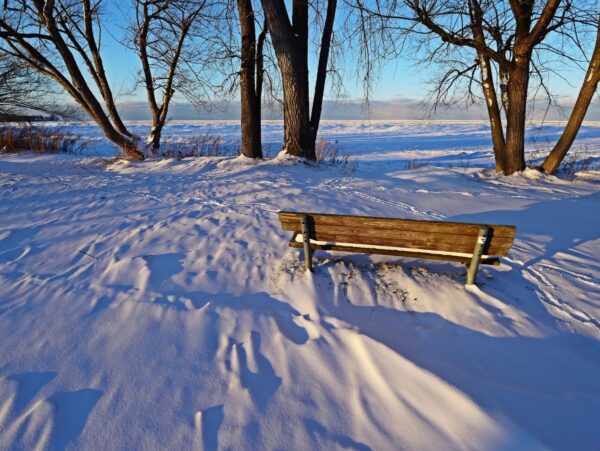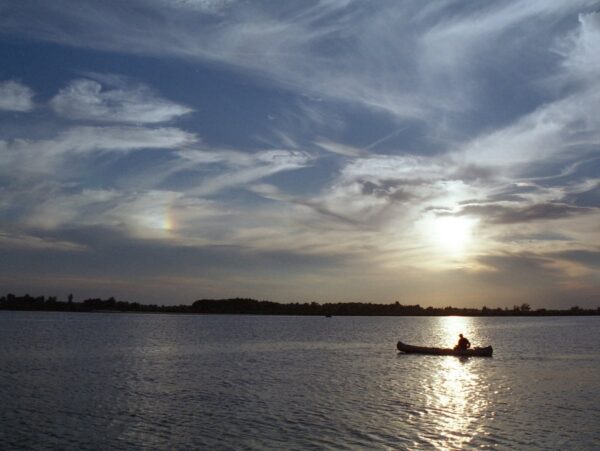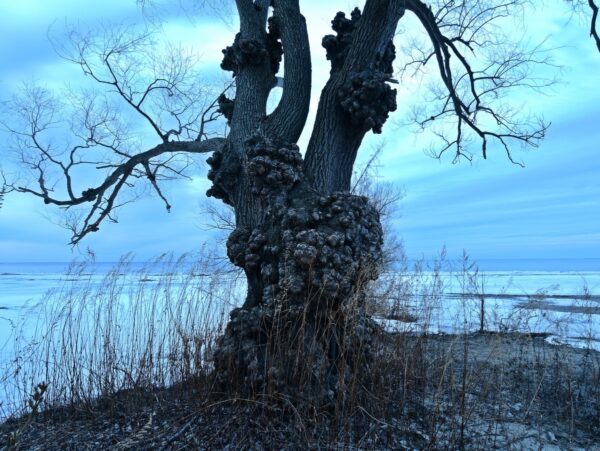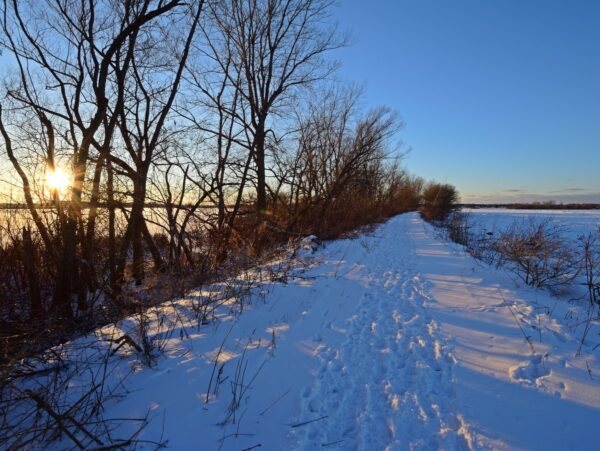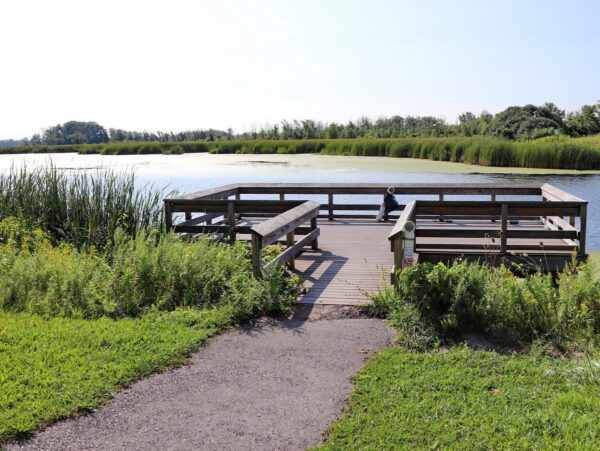Northwest of Rochester is a sprawling 3,322-acre complex of wetlands, ponds, and marshland referred to as the Braddock Bay Wetland complex. It is an amalgamation of the 2,135-acre Braddock Bay Wildlife Management Area, Braddock Bay Park, and a growing number of acres in adjoining nature preserves. Here, you will find an abundance of outdoor activities in a linchpin habitat for Lake Ontario and far beyond.
Visiting the complex on foot is a bit tricky. Though boots are a necessity, since marsh and wetland trails are predictably muddy, it is not really a destination for hardcore hikers looking to pound out miles. Many of the trails here are under a mile, and though you could stitch together a longer trail by combining them, they are scattered and too far apart to be connected. The trails are flat, short, often overgrown, and do not lead to spectacular destinations or vistas. Nor is it a place to bring your dog. But neither the trail nor its ultimate destination is the point; rather these locations are meant for lingering and observing. It’s recommended to walk softly so you get a chance to see the real attraction, the area’s ever-changing, sometimes raucous visitors—birds. Indeed, this is one of New York’s best birding spots and, during migration season, is considered by many to be the best in the country. As such, you will want to add binoculars to your list of essential items when visiting.
The area includes grasslands, woodlands, open water, wetland, shoreline, and emergent and submergent marshes. All of these provide shelter, food, and nesting for nearly every type of bird that uses the Atlantic Flyway, the thousands of miles-long migratory route that stretches from the southern tip of South America to the Canadian Arctic region along the eastern coast of the Americas. Well over 300 bird species have been sighted at Braddock Bay, including more than 130 songbirds and 23 raptors. And the sheer quantity of species is compounded by the volume: millions of birds each year. For instance, each spring over 140,000 birds of prey migrate through the area. Each month in the spring brings a new category of bird: waterfowl in March, owls in April, and songbirds in May. Summer hosts a variety of species that stay rather than pass through. And of course, in the fall, the migration reverses. To say it is a hotspot for birds is an understatement.
This stopover along the Atlantic Flyway is so frequented that several research stations and observation posts are located within the complex, another not-so-subtle hint that birding here is truly exceptional. A list of all the birds seen here would be practically endless but notable species include Indigo Bunting, Great Blue Heron, Trumpeter Swan, Saw-whet Owl, Black Tern, Harlequin Duck, Sandhill Crane, Barrow’s Goldeneye, Sage Thrasher, American White Pelican, and Northern Harrier. A hawk watch platform is easily accessible at Braddock Bay Park and provides exceptional raptor viewing opportunities.
In many ways, Lake Ontario can be viewed as a microcosm of an ocean. Like the oceans, aquatic life is most abundant in the shallower, transitional spaces. Much like edge habitats on the land, the shallow marshlands are where animal and plant life intermingle, providing shelter and food. Whether the animals stay or just visit to breed or feed, these areas are essential to the overall health of the lake and surrounding communities. The embayments (Braddock Bay, Buck Pond, Long Pond, and Cranberry Pond) along Lake Ontario’s shores are key parts of the lake’s ecosystem. They are the fisheries and breeding habitats for many aquatic species. In a way, all of the life within the lake stems from these nutrient and life-rich waters. They abound with activity, and it is no wonder the shores are dotted with human and avian fishermen.
Since much of the complex is largely open water or wetland with comparatively little trail network to its total acreage, an interesting way to explore and maximize your birdwatching is by boat. Larger boat launches are located in the marinas and parks, but there are many car-top launches as well. The protected lands around the ponds and bay are mostly along the southern edges so you will likely have to paddle across open water (with the possibility of strong winds coming off the Great Lake) to get into the thick of it. All of the embayments are connected to Lake Ontario by intermittent channels that open and close depending on the currents and waves of the Great Lake. Consequently, the ponds are not accessible from the lake and the only reliable boat access is to utilize the launch at each pond.
For those who would like to stretch their legs and get out for a short hike, the Genesee Land Trust’s Salmon Creek Preserve offers mowed paths that wend their way through grasslands adjacent to Salmon Creek at the western end of the complex. The preserve features scenic views of the creek as well as extensive fields on adjacent state wildlife lands. This is a great spot to look for Northern Harriers and other grassland-dependent birds. Trails may be muddy in the spring so be sure to wear appropriate footwear.
The Braddock Bay Wetland Complex’s importance as a wildlife habitat cannot be overstated with its broad implications across the Americas. Locally, it acts as a buffer to keep Lake Ontario waters clean and provides natural hatcheries for sports fishing, recreation, tourism, and scenery for all to enjoy. This gem is available for all to enjoy thanks to the work of local, state, and federal agencies, conservation groups, and the actions of individuals. It’s a precious reminder that conservation efforts have multiplicative effects that start at home and spread through the natural world.

